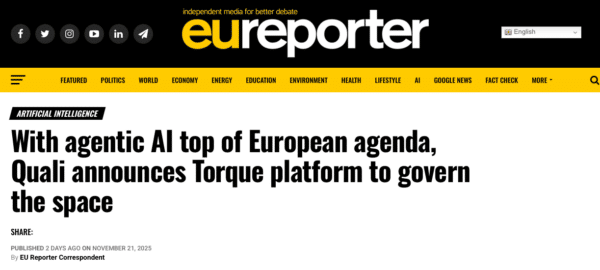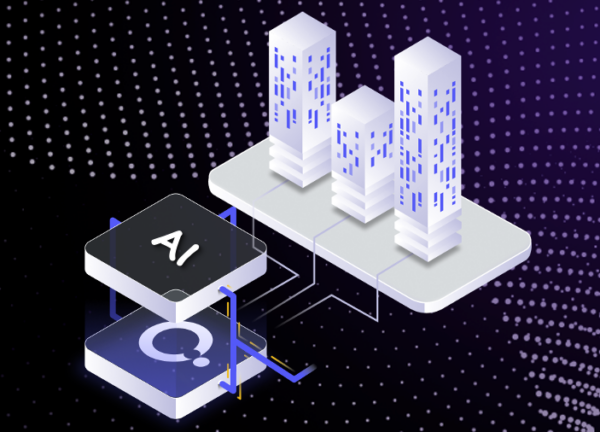Description
Securing Orchestration, Agents, and GPU Workloads at Runtime
Overview
Agentic AI changes the threat model. Autonomous agents can create, modify, and destroy infrastructure; chain tools and APIs; and operate at machine speed. The security perimeter shifts from networks and instances to orchestration, policy, and runtime behavior. Traditional controls (perimeter firewalls, ad‑hoc IAM, post‑facto scanning) are necessary but insufficient, especially for GPU-intensive workloads, ephemeral environments, and model/data supply chains.
This document defines the critical capabilities required to secure the AI stack, covering agent behavior, GPU tenancy, model/data pipelines, and environment lifecycle, so enterprises can accelerate AI adoption without loss of control.
Key Findings (Observations)
- The attacker’s surface is now orchestration.Agents and pipelines provision resources, move data, and invoke tools. If orchestration isn’t governed at runtime, controls fail in production.
- GPU cost = security risk.Unchecked access to GPUs enables exfiltration, crypto mining, or runaway spend. Cost governance is a security control for AI.
- Model & data supply chain is fragile.Models, prompts, embeddings, and datasets form a new SBOM. Unsigned or opaque artifacts create silent failure modes and compliance gaps.
- Inter‑agent trust is undefined.Agent→agent and agent→tool calls often occur without scoped permissions, auditability, or anomaly detection.
- Ephemeral. Short‑lived environments evade periodic audits. Continuous discovery and runtime policy are mandatory.
Recommendations
- Bind security to orchestration. Enforce policy at provision and at runtime; block noncompliant agent actions by default.
- Instrument the AI supply chain. Track and attest models, datasets, prompts, images, and infra blueprints; require signed artifacts.
- Constrain agents by design. Apply least‑privilege tool access, data scopes, cost/time ceilings, and kill‑switches per agent and per task.
- Isolate GPU work. Enforce tenancy, quotas, and automated shutdown, sandbox untrusted code and agents.
- Continuously discover and normalize. Maintain a live inventory of agents, environments, GPUs, models, and data with ownership, purpose, and lineage.
Critical Capabilities for AI / Agentic Security
- Orchestration‑Level Policy‑as‑Code
Enforce security, compliance, cost, and lifecycle policies at the control plane that agents invoke. Apply before provisioning and continuously during runtime. - Agent Identity, Scopes & Guardrails
Issue unique identities to agents; define allowed tools, data scopes, and actions. Enforce time/cost ceilings, rate limits, and per‑task sandboxes; provide kill‑switch & quarantine. - GPU Tenancy & Runtime Controls
Quotas, reservations, and automated shutdown for GPUs; isolate tenants; detect abnormal utilization; enforce region/zone and data‑residency constraints. - Model/Data Supply‑Chain Integrity (AI SBOM)
Track model versions, datasets, prompts, embeddings, and containers with signed attestations; verify provenance; block unsigned/tainted artifacts; maintain lineage. - Environment Isolation & Just‑in‑Time Access
Ephemeral, sealed environments with JIT credentials; automatic teardown; scoped secrets; policy‑aware egress and network micro‑segmentation. - Continuous Discovery & Normalization
Real‑time inventory of agents, blueprints, GPUs, and resources regardless of origin (IaC, click‑ops, APIs). Normalize into governed building blocks. - Drift, Anomaly & Inter‑Agent Behavior Analytics
Detect policy drift, prompt/tool misuse, lateral movement, data over‑reach, and unusual GPU/egress patterns; auto‑remediate or quarantine. - Unified Audit & Forensics (Human + Machine Actors)
End‑to‑end trails capturing who/what/whyacross agents, humans, tools, models, and infra; impact mapping to quickly assess blast radius and revoke. - Secure Integrations & Secrets Governance
Native hooks into CI/CD, registries, MLOps, ITSM, and key vaults; rotate credentials; enforce secret scopes per agent/task/environment. - Business‑Aligned Controls for AI
Policy tied to cost centers, data classifications, and criticality (sandbox vs. production); real‑time reporting for risk, cost, and compliance.
Capability Comparison Across Tool Categories
How to Interpret Capability Scores The following capability scores use a 1–5 qualitative scale to reflect maturity and fit for dynamic, AI-infused infrastructure. These are directional, not absolute, based on support for real-time cost control, contextual attribution, and autonomous optimization.
1 = Rudimentary or Absent Capability: Basic or nonexistent support; requires heavy customization.
2 = Emerging / Partial: Limited capability or context-specific use cases.
3 = Functional: Reasonable support, but lacking real-time or AI-aware depth.
4 = Advanced: Solid functionality; handles most modern AI/Agentic security scenarios.
5 = Purpose-Built / Best-in-Class: Native support for modern workloads; real-time, contextual, and autonomous.
| Capability | CSPM/ CNAPP/ SecOps | CMPs | IaC Scanners /Policy | K8s Platforms (e.g., Rafay) | AI Ops/ Auto‑Optimization (e.g., Sedai) | IPE (e.g., Torque) |
| Orchestration‑Level Policy‑as‑Code | 3 | 3 | 3 | 3 | 2 | 5 |
| Agent Identity, Scopes & Guardrails | 2 | 2 | 2 | 3 | 3 | 5 |
| GPU Tenancy & Runtime Controls | 2 | 2 | 1 | 4 | 3 | 5 |
| Model/Data Supply‑Chain Integrity | 3 | 2 | 2 | 3 | 2 | 5 |
| Environment Isolation & JIT Access | 3 | 3 | 2 | 4 | 2 | 5 |
| Continuous Discovery & Normalization | 3 | 2 | 2 | 3 | 2 | 5 |
| Drift/Anomaly & Inter‑Agent Analytics | 3 | 2 | 2 | 3 | 4 | 5 |
| Unified Audit & Forensics | 4 | 3 | 2 | 3 | 2 | 5 |
| Secure Integrations & Secrets Gov. | 3 | 3 | 2 | 4 | 2 | 5 |
| Business‑Aligned Controls for AI | 2 | 3 | 1 | 2 | 2 | 5 |
Interpretation: Traditional tools are strongest at detection and container/Kubernetes posture (CSPM/CNAPP; Rafay for K8s). IaC scanners catch misconfigurations pre‑merge but lack runtime control. AI‑ops optimizers (e.g., Sedai) improve performance/cost but do not enforce enterprise policy or agent guardrails. IPEs embed governance at orchestration, unify runtime policy, and extend to GPUs, agents, and AI artifacts.
Comparative Analysis of Tool Categories
- CSPM/CNAPP/SecOps:Strength in visibility, misconfig detection, and workload posture. Gaps in orchestration‑level enforcement, agent guardrails, AI SBOM, and GPU tenancy; remediation often ticket‑driven.
- CMPs:Improve cost/governance overlays but remain UI‑centric and post‑provision; limited agent awareness and GPU‑specific controls.
- IaC Scanners/Policy Engines:Useful pre‑deployment; lack runtime enforcement, agent identity, and GPU/AI artifact context.
- Kubernetes Platforms (e.g., Rafay):Strong multi‑cluster K8s, access controls, and add‑ons for GPU/operator lifecycles. Less coverage for cross‑platform agent governance, AI SBOM, and business‑aligned policy beyond K8s scope.
- AI Ops/Auto‑Optimization (e.g., Sedai):Focused on SLO optimization and right‑sizing. Limited compliance, policy‑as‑code, or secure orchestration primitives.
- Infrastructure Platform Engineering (IPEs e.g., Torque):Orchestration‑native security with policy‑as‑code at provision and runtime, continuous discovery/normalization, GPU tenancy controls, AI SBOM, inter‑agent guardrails, and unified audit.
The Role of Torque
Torque secures AI by relocating the security perimeter to environment orchestration:
- Runtime Policy‑as‑Code:Block/allow agent actions; enforce cost/time ceilings, data scopes, regions, and secrets usage; policy inheritance by workspace/project.
- Agent Guardrails & Quarantine:Unique identities, least‑privilege tool permissions, task‑bound tokens, isolation sandboxes, and a one‑click kill‑switch.
- GPU Governance:Quotas, tenancy, automated shutdown, anomaly detection, and cost controls to prevent misuse and sprawl.
- AI Supply‑Chain Controls:Signed blueprints, model/dataset provenance, artifact verification, and impact mapping across agents/environments.
- Continuous Discovery:Live inventory of agents, GPUs, environments, and artifacts with ownership/purpose; normalization into reusable, governed building blocks.
- Unified Audit & Reporting:Human + machine actor trails; compliance dashboards; risk/cost posture aligned to business context.
Result: Organizations gain safe autonomy, accelerating AI while maintaining provable control over agents, GPUs, and the full AI stack
Agentic AI will only scale where orchestration security is continuous and enforceable. The capabilities above, rooted in policy‑as‑code, agent guardrails, GPU tenancy, AI SBOM, and continuous discovery, form the blueprint. IPEs like Torque operationalize this blueprint, enabling enterprises to move fast on AI without compromising security, compliance, or cost discipline.
Evaluation
Critical Capabilities: FinOps for AI / Agentic Security
Introduction: How to Use This Framework
AI and agentic workloads change the security perimeter. Autonomous agents can provision, modify, and terminate infrastructure, consume GPU resources, and trigger data/model pipelines at machine speed. Traditional security, focused on IAM, network perimeters, and post-facto scanning—cannot contain this. Enterprises must embed security at orchestration, enforce guardrails continuously, and track both human and machine actors.
This framework enables enterprises to:
- Identify gaps in securing AI and agentic workloads.
- Measure maturity across orchestration-native security capabilities.
- Understand business value tied to runtime governance.
- Evaluate readiness to adopt agentic AI safely at scale.
Each capability includes a description, measurement criteria, expected business results, and a 1–5 maturity scale.
Critical Capabilities for AI / Agentic Security
Orchestration-Level Policy-as-Code
- Description: Enforce security, compliance, cost, and lifecycle policies at the control plane before and during runtime.
- Measurement Criteria: Are policies defined ad hoc, per cloud, or centrally applied across agents and environments?
- Business Value: Prevents noncompliant deployments, enforces governance at runtime.
Evaluation:
☐ 1 – None
☐ 2 – Manual guardrails
☐ 3 – Detection only
☐ 4 – Policy-driven enforcement for select workloads
☐ 5 – Continuous enterprise-wide enforcement
Agent Identity, Scopes & Guardrails
- Description: Unique identities for agents with least-privilege tool/data access, cost/time ceilings, and kill-switches.
- Measurement Criteria: Are agents anonymous, partially scoped, or fully governed with guardrails?
- Business Value: Prevents agent sprawl, misuse, and runaway consumption.
Evaluation:
☐ 1 – None
☐ 2 – Shared credentials
☐ 3 – Scoped access for select agents
☐ 4 – Guardrails for major agents
☐ 5 – Full enterprise agent identity + guardrails
GPU Tenancy & Runtime Controls
- Description: Quotas, reservations, anomaly detection, and automated shutdown for GPUs.
- Measurement Criteria: Are GPUs manually allocated, partially governed, or controlled dynamically by policy?
- Business Value: Prevents overspend, misuse, and compliance breaches.
Evaluation:
☐ 1 – None
☐ 2 – Manual allocation
☐ 3 – Quotas without automation
☐ 4 – Policy-driven controls for GPU workloads
☐ 5 – Fully automated, policy-enforced GPU governance
Model/Data Supply-Chain Integrity (AI SBOM)
- Description: Signed, versioned tracking of models, datasets, prompts, embeddings, and containers.
- Measurement Criteria: Are artifacts unmanaged, loosely tracked, or fully verified with provenance?
- Business Value: Prevents poisoning, ensures compliance, enables traceability.
Evaluation:
☐ 1 – None
☐ 2 – Ad hoc tracking
☐ 3 – Version control only
☐ 4 – Partial provenance and attestation
☐ 5 – Full signed AI SBOM with runtime enforcement
Environment Isolation & Just-in-Time Access
- Description: Ephemeral, sealed environments with scoped secrets and JIT credentials.
- Measurement Criteria: Are environments persistent, semi-isolated, or fully ephemeral with enforced teardown?
- Business Value: Reduces exposure, improves compliance, limits lateral movement.
Evaluation:
☐ 1 – None
☐ 2 – Static environments
☐ 3 – Basic segmentation
☐ 4 – Ephemeral environments for major workloads
☐ 5 – Full isolation + JIT access across environments
Continuous Discovery & Normalization
- Description: Live inventory of agents, GPUs, blueprints, and resources normalized into governed building blocks.
- Measurement Criteria: Is discovery manual, periodic, or continuous and normalized automatically?
- Business Value: Provides visibility, prevents shadow IT, enforces reuse.
Evaluation:
☐ 1 – None
☐ 2 – Manual inventory
☐ 3 – Periodic scans
☐ 4 – Automated discovery
☐ 5 – Continuous real-time discovery + normalization
Drift, Anomaly & Inter-Agent Analytics
- Description: Monitor for drift, rogue actions, policy violations, or unusual GPU/network behavior.
- Measurement Criteria: Are anomalies detected manually, post-event, or continuously with remediation?
- Business Value: Prevents security incidents, reduces MTTR, enables resilience.
Evaluation:
☐ 1 – None
☐ 2 – Manual checks
☐ 3 – Automated detection only
☐ 4 – Automated detection + partial remediation
☐ 5 – Continuous anomaly detection + auto-remediation
Unified Audit & Forensics (Human + Machine Actors)
- Description: End-to-end trails of all actions across agents, humans, and environments.
- Measurement Criteria: Is audit partial, siloed, or fully unified across human + machine actors?
- Business Value: Accelerates investigations, proves compliance, improves accountability.
Evaluation:
☐ 1 – None
☐ 2 – Partial logs
☐ 3 – Per-system logging
☐ 4 – Unified audit for major systems
☐ 5 – Enterprise-wide unified audit + forensics
Secure Integrations & Secrets Governance
- Description: Secure hooks into CI/CD, registries, vaults, and ITSM systems; scoped secret management.
- Measurement Criteria: Are secrets shared manually, partially governed, or scoped dynamically with rotation?
- Business Value: Reduces risk of secret sprawl, enforces least privilege, embeds security into workflows.
Evaluation:
☐ 1 – None
☐ 2 – Manual secret mgmt.
☐ 3 – Partial automation
☐ 4 – Scoped + rotated secrets for key systems
☐ 5 – Enterprise-wide secret governance with integrations
Business-Aligned Controls for AI
- Description: Apply policies tied to cost centers, sensitivity, and workload criticality.
- Measurement Criteria: Are controls ad hoc, loosely enforced, or aligned to business context dynamically?
- Business Value: Aligns AI consumption with enterprise risk and financial strategy.
Evaluation:
☐ 1 – None
☐ 2 – Ad hoc controls
☐ 3 – Partial cost/risk alignment
☐ 4 – Policy enforcement for key workloads
☐ 5 – Enterprise-wide business-aligned controls
Summary: How to Evaluate Overall Capabilities
- Score Each Capability (1–5): Use the maturity scale for all 10 capabilities.
- Calculate the Average: Add scores and divide by 10.
- 1–2 = Reactive: Blind spots, unmanaged agents, GPU risk exposure.
- 3 = Transitional: Partial automation, some policy enforcement, gaps remain.
- 4 = Advanced: Policy-driven orchestration, guardrails, continuous discovery, audit.
- 5 = Optimized: Enterprise-wide orchestration-native security with safe AI autonomy.
- Prioritize Gaps: Weakness in policy enforcement, GPU governance, or anomaly detection signals highest risk.
- Strategic Goal: Reach 4–5 maturity to adopt agentic AI at scale with security, compliance, and cost control.
This evaluation framework turns AI/agentic security into a practical maturity model, helping enterprises measure readiness and prioritize investments to secure orchestration, agents, GPUs, and the AI supply chain.
Quick Capability Assessment Worksheet
Use this worksheet to score your organization across the ten critical capabilities. Add notes or gaps identified to prioritize next steps and investments.
AI / Agentic Security – Capability Evaluation Worksheet
| Capability | Score (1–5) | Notes / Gaps Identified |
| Orchestration-Level Policy-as-Code | ||
| Agent Identity, Scopes & Guardrails | ||
| GPU Tenancy & Runtime Controls | ||
| Model/Data Supply-Chain Integrity | ||
| Environment Isolation & JIT Access | ||
| Continuous Discovery & Normalization | ||
| Drift, Anomaly & Inter-Agent Analytics | ||
| Unified Audit & Forensics | ||
| Secure Integrations & Secrets Governance | ||
| Business-Aligned Controls for AI | ||
| Average Score |




